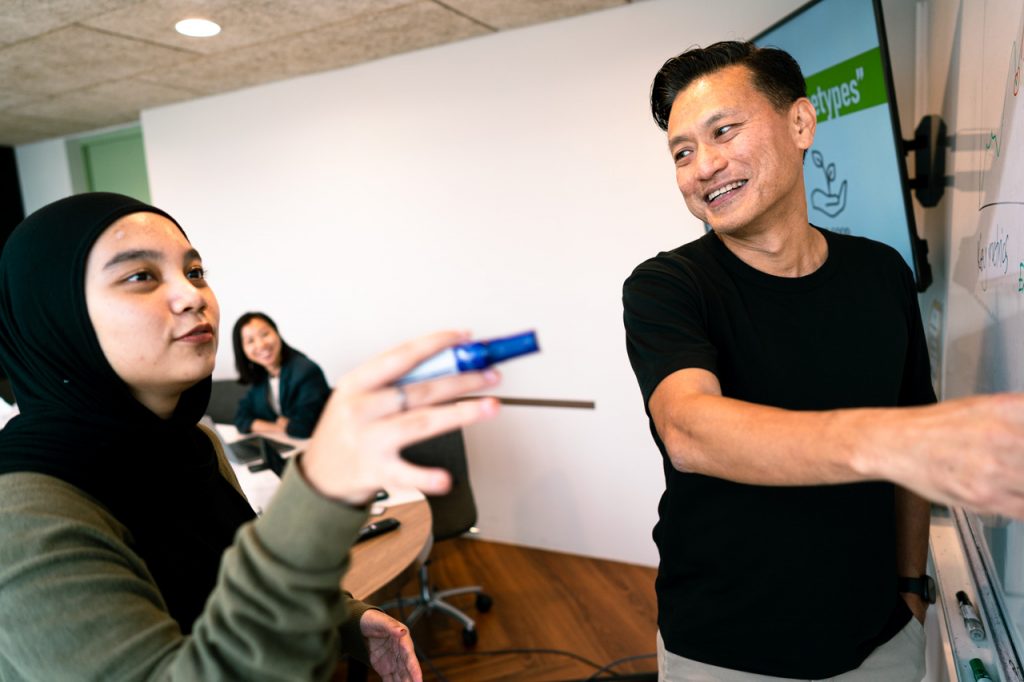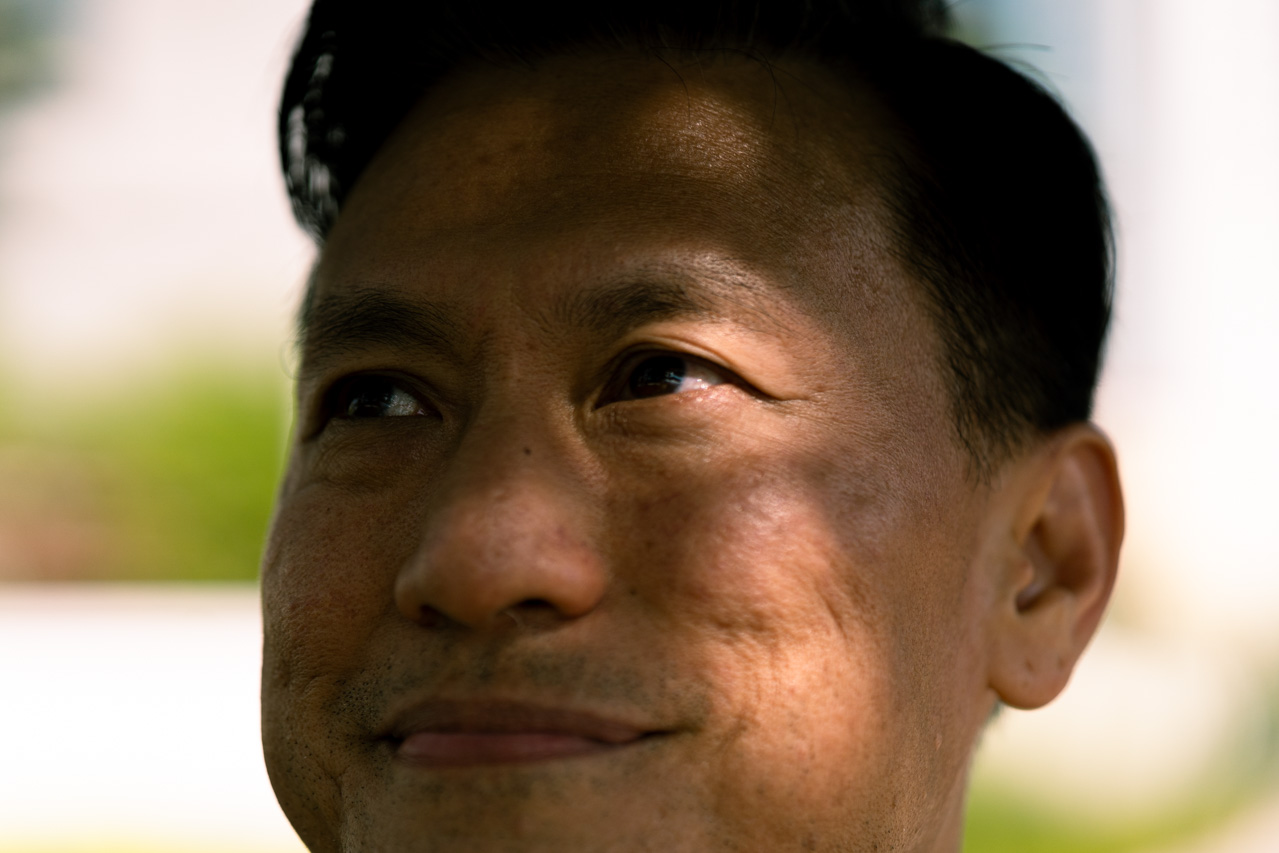All images by Stephanie Lee for RICE Media.
Glenn Lim knows how effective it is to share about his drug-filled past with youths.
As a former drug abuser and convict, Glenn knows what they’re going through. He emphasises the importance of giving ex-offenders opportunities to share their struggles to encourage young people “not to learn lessons the hard way”.
Glenn is the founder of Architects of Life (AOL), which nurtures recovering ex-offenders, known as persons-in-recovery, into mentors.
At AOL, persons-in-recovery are given the opportunity to share their experience as lived examples of drug abuse. They lead the path for other members of the community to advocate against drug abuse.
Ultimately, being an AOL mentor means steering those who may be vulnerable to the influences of drugs away from it—to ensure they do not go down the path that they once fell into.
Building Life
“What we currently face are more careless attitudes towards drugs,” highlights Glenn, who harbours a soft spot for the vulnerable who, in his words, face a “permissive culture towards drugs”.
“It’s not just about access to information out there, [and] it’s not purely an issue of awareness,” he explains. “[It’s] quite the opposite—there is a proliferation of misinformation. All these falsehoods are backed up by a backdrop of influencers, celebrities and neighbouring countries who are promoting drug use.”

A former person-in-recovery—now a vanguard of modern anti-drug advocacy—Glenn furrows his brow as he recalls a recent Zoom consultation with tertiary students. They cited several health-related articles that support drug use.
“These articles might not be validated or empirical,” debunks Glenn. In turn, he points out that Thailand, which legalised cannabis two years ago, is already suffering the short-term consequences. He highlights the increase in addictions in Thailand and the physical impact legalising cannabis has had on Thai youths under 21.
Glenn engages Singaporean youths in meaningful dialogues—he’s most passionate about “how we address this new generation”. Engaging youths on drugs cannot take a finger-wagging direction of merely telling youths to stay away from drugs. Instead, it has to spark meaningful conversations in safe spaces and facilitate an understanding of vulnerabilities youths may have towards drugs without judgement.
This can nurture a common ground of understanding, which will help advocate against drugs towards the youth demographic.
He spearheads AOL, which rallies persons-in-recovery and turns them into role models in at-risk and post-risk communities.
Rehabilitation does not end at reintegration, Glenn believes. He would know—his journey so far has been anything but a cakewalk.

Wake Up Call
One of the most terrifying moments of Glenn’s life was when he was apprehended at the Johor-Singapore Causeway for smuggling a substantial amount of substances—warranting either a life sentence or the death penalty.
Glenn looks back to who he was at that point: A “complacent and arrogant” young man who had gotten used to smuggling after a year.
“My whole world came crashing down. My parents, whom I had disowned three years ago, came immediately to bail me out.”
Four months later, Glenn received his sentencing.
“I told myself that I had to wake up and turn over a new leaf,” he recalls. The judge who presided over his case pointed at him and (”I will never forget this moment,” Glenn emphasizes) informed him his sentence would be dropped from a “charge of importation” to a first-time possession charge.
This meant that Glenn avoided a life sentence. Instead, he faced imprisonment for a minimum of six months. Glenn shares that his worldview was rocked by what is known as a Significant Emotional Event (SEE) in psychology.
“In jail, I developed a vociferous appetite for reading and would read about three books from the prison library a day,” he explains. When he was released, a counsellor advised him to go to Teen Challenge and continue a residential programme there for 18 months.
“I was reluctant to do so,” he adds, “but I trusted [his] advice.”

He took his ‘O’ and ‘A’ Levels after his release, along with courses in youth outreach and counselling.
Glenn recalls that during his six-month prison stint, he was reacquainted with many friends from the drug abuser circles of his past. He identified with their pain and listlessness but laments how they didn’t hold themselves accountable.
“I can’t even begin to count the number of inmates who blamed their victim, the judiciary, the government,” he pauses before saying, “but wouldn’t admit to their mistakes.”
Glenn saw the need for a structured system that would tend to ex-offenders—and one that would approach them with a human touch. Architects of Life was conceived to help former offenders work through their misgivings and confusion. He registered the organisation in 2014.
Scaffolding Breakthroughs
The tagline of Architects of Life is ‘from stereotypes to archetypes’.
What does he mean by that? Glenn shares a poignant anecdote to explain this slogan. On the MRT one day, he saw a pregnant lady enter a crowded train.
It was peak hour, standing room only, but when she walked in, most people were glued to their phones and failed to notice her need for a seat. Glenn’s cabin was full of junior college students, supposedly top students “being trained to be the leaders of the future”.
However, none of them budged. It was a “gangster-looking, heavily tattooed man” who stood up from another cabin to offer this pregnant lady his seat. Glenn recalls the many admiring glances that followed this unlikely hero.
“A stereotype is a negative image of an individual, and an archetype is someone others want to emulate. That incident on the train created a vision for me—that when an ex-offender does good, their impact reaches much further than that of a normal citizen.”

He emphasizes that rehab work does not end at reintegration. Instead, he hopes ex-offenders live to stand out so they can stand against the tumultuous tides that threaten society.
Glenn makes an effort to keep in touch with each of his beneficiaries. He’s glad he has “seen the seeds he sowed take root and even seen some of them bear fruit.”
Come and SEE (and PIEs)
Glenn has met many persons-in-recovery who have had their SEE and have become highly motivated. AOL funnels these individuals, whom he notices are enthusiastic about shaping a brighter future for themselves, through a series of introductory, intermediate and advanced programmes.
This funnel experiences dropouts, but Glenn is not perturbed. He shares that the people who walk through AOL’s proverbial doors are second, third, fourth or even fifth-time offenders, but Glenn is heartened by their determination.
“They understand the ramifications of not making a change. They might not know how to make a change, but they know that they want change. This is where AOL walks with them hand in hand and suggests strategies to them.”

PIES is an acronym for physical, intellectual, emotional, and social—these are the ways drugs damage lives and continue to hurt persons-in-recovery like Glenn until today.
For example, drugs affect a user’s diet, sleep and relationships. On an intellectual level, Glenn divulges that he finds it difficult to study and fully understand new things. He still struggles to manage his emotions.
Through programmes held by AOL and the National Council Against Drug Abuse (NCADA), which advocates for conversations towards a drug-free culture, the post-risk community share about the harm that they have suffered or still suffer in health and familial relationships.
These lived experiences, Glenn observes, trigger a psychological phenomenon called vicarious projection, where the recounting of gripping experiences makes listeners feel like they are in the storytellers’ shoes.
“The at-risk youths who hear these stories have shared that they don’t want to go through the ‘same things their big brothers did’ and that they are happy that the former addicts were able to redesign their futures. Our message to them is ‘don’t learn these lessons the hard way’.”

NCADA supports these programmes, provides more opportunities to AOL participants and opens doors to collaborations with other agencies and schools. This vital support, Glenn shares, has enabled him and AOL to encourage and challenge more ex-offenders.
Persist Beyond At-Risk
AOL conducts various events such as ‘human library’ workshops that include persons-in-recovery as subjects.
Other AOL gatherings include the HIIT and Run project, where persons-in-recovery lead workouts, and Triad Trails, where persons-in-recovery who grew up in Chinatown serve as tour guides, sharing the harsh history of Chinatown and its drug-smeared history.
“This new generation doesn’t take hard nos, so we facilitate meaningful anti-drug engagement instead of one-way dialogue,” he explains.

And, judging from the What’s Your Fix? campaign, it is clear that a key component of building this new narrative is empathy.
Through the stories of lived examples, we can demonstrate the deeper significance of building a drug-free culture in Singapore and inspire youths who may be indifferent towards drug abuse to advocate the drug-free cause instead.






